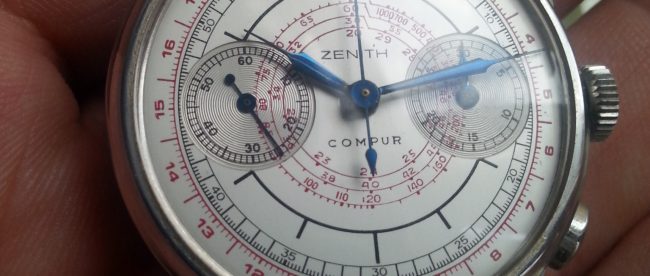1. Generation Zenith Compur
The early Zenith chronographs shown in Roessler´s book at least for me belong to the most beautiful watches I know.
I must confess that I have always felt a bit envious about these rare pieces. Unfortunately there is not much further information added in the book about their history. Some experts already have pointed out that there are some inaccuracies and mistakes in Roesslers great compendium.
One of these rare pieces that made me wonder is the Zenith Compur shown on page 219. First of all the ascribed size of 46 mm looks strange to me. The sector dial design is quiet common for that time period, the hands may be added later (Cairelli?). But most important, the movement definitely is not a common Martel movement as used in later Zenith Compurs. So I was always wondering what kind of watch that might be…?
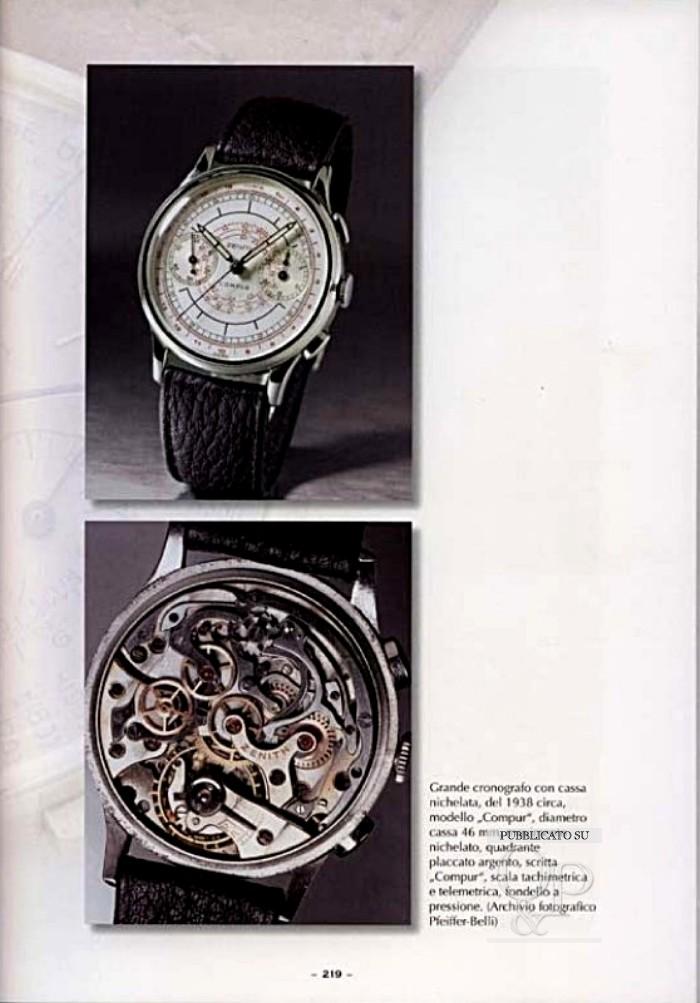
Well due to some happy coincidences I had this Zenith Compur in my collection two years ago. I started an additional research and here are the results.
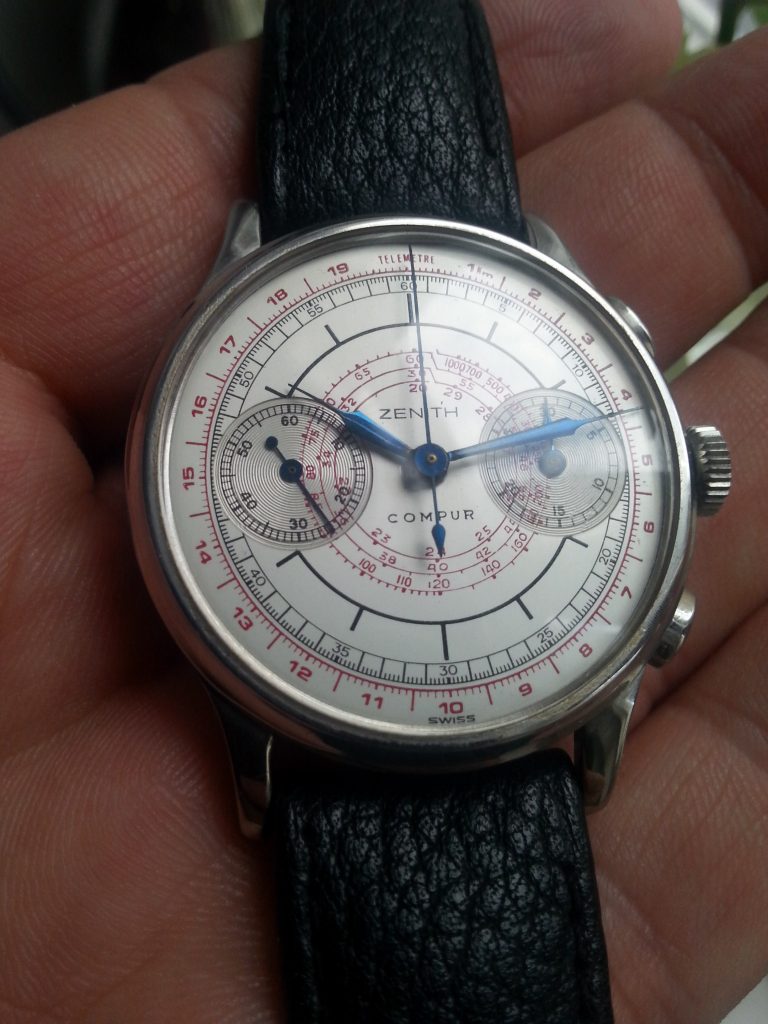
Just some brief facts concerning the case:
- The size mentioned in Roessler´s book is wrong, as the watch has a diameter of around 37-38mm
- The watch is triple signed (dial, inner case back, movement)
- The beautiful snap back case is in “staybrite steel” and has a concave silver bezel.
- The two oval pushers just ending at the beginning of the lugs
The movement
The basis movement of the watch is a highly finished Valjoux 22 GH movement (15 linien) with Breguet hairspring and compensation balance. But be aware that the Valjoux 22GH is usually a one pusher movement, and that the watch shown here has two pushers!
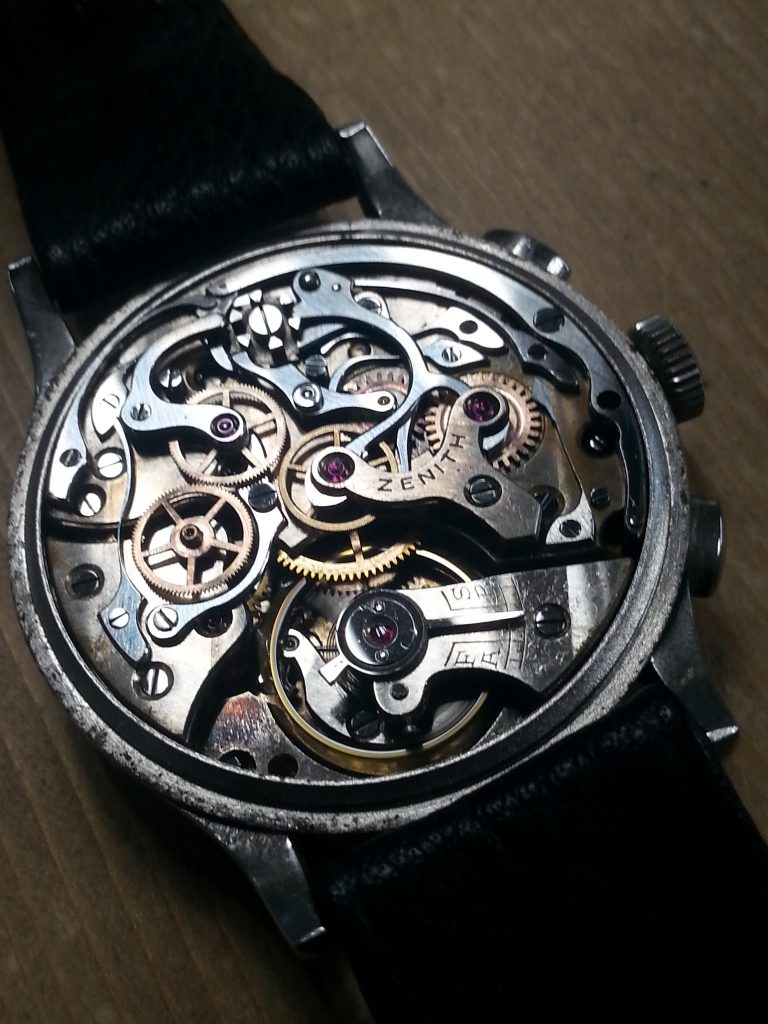
Due to the help and gorgeous research of the italian collector Nicola1960, who shares his knowledge generously at italian forum Orologi&Passioni and an early article from the German watch expert Gisbert Brunner we know more detailed why there are two pushers and how the movement works.
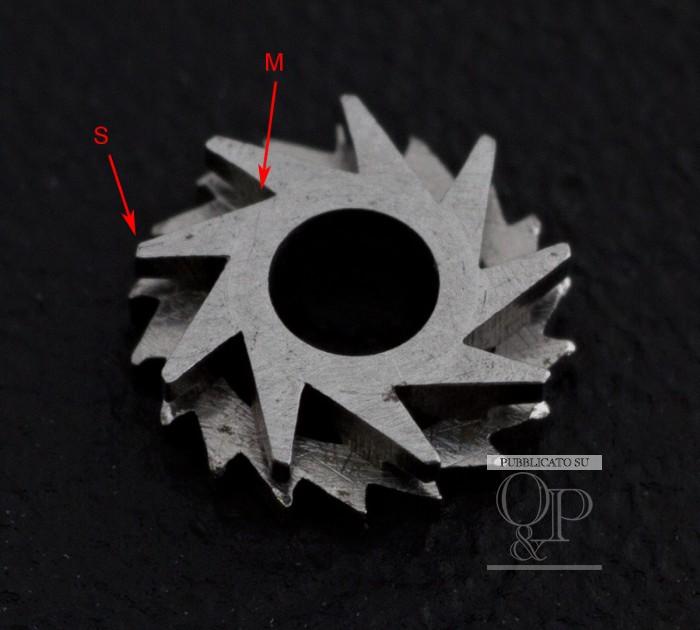
Zenith added a second column wheel to the movement, which is mounted on the front plate beneath the dial. The additional pusher at 4 o’clock allows the chronograph hand to be stopped and restarted during operation without it having to return to zero. Universal used a very similar mechanism based on a Martel basis movement (described in Sala´s UG book on page 48).
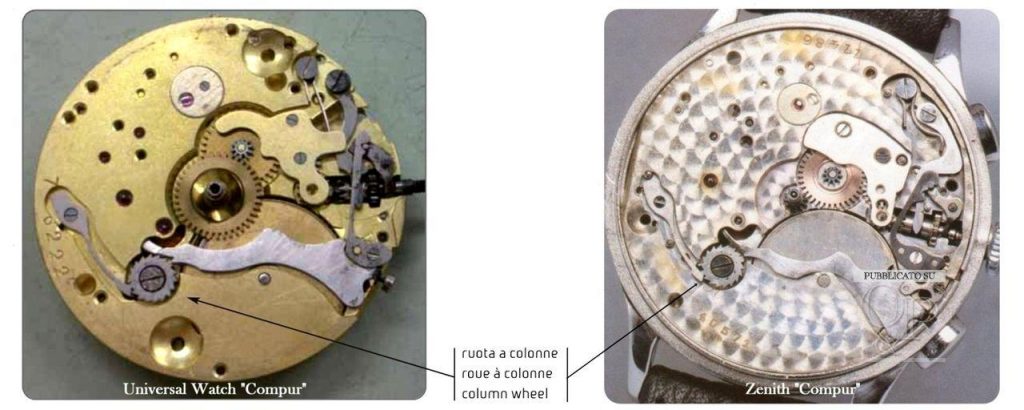
This feature, called additional stop function, was replaced by Zenith (and Universal) only one year in production (1934 to 1935), switching towards regular two pusher Martel movements for their Compur/Compax lines. There is a production number engraved in the inner case back (556´1XX), which is very close to the very few known examples of early Universal Compur “additional stop” chronographs (based on Martel movements). Christie´s just sold a very similar “sister” Universal Compur with a black sector dial and case No. 554’767 on the Geneva watch auction back in November 2016.
So due to the nearby case back numbers in the UG and the Zenith Compur I guess the chronograph was built around 1935. The watch might be even build at Martel/Universal factory. There is an additional number (No. 57) stamped onto the movement plate (maybe an internal production number).
Conclusion
Well there only exist very few informations about these watches and only a very small number is known today. I just found a handfull of these 1. gen. Zenith Compur during my research and around ten to fifteen “Universal Compur” with similar (Martel based) movements.
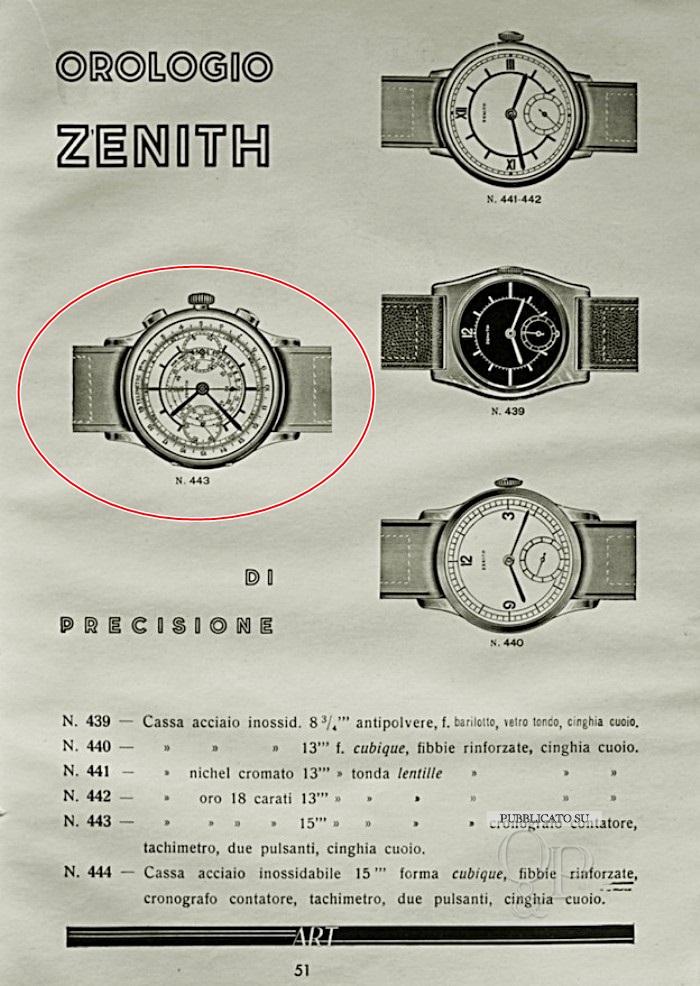
Nicola1960 even found an advertisement from the 1930´s that proofs that these early Zenith chronographs are not only prototypes, but offered as “regular” watches to the market.
Looking to the results of the research, from my point of view these 1. gen. Zenith Compurs, as what supposed to be the very first “modern two pusher” chronograph ever made by Zenith, mark an important milestone in Zenith´s brand history!

